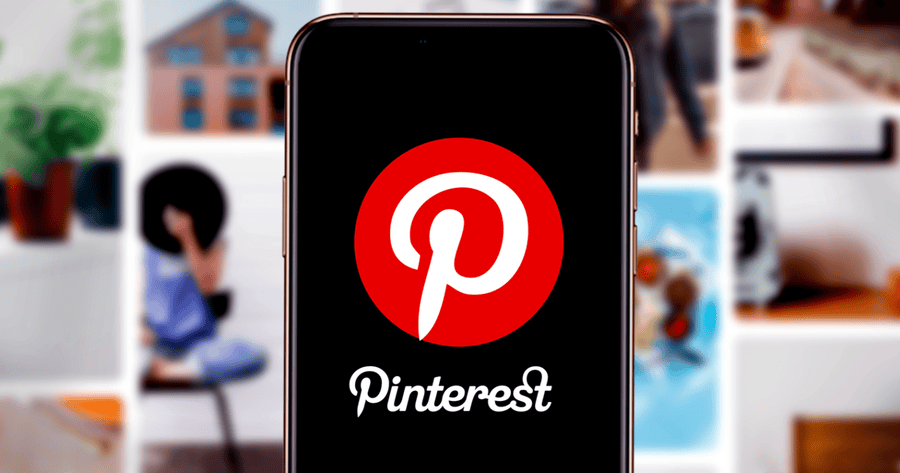Are you wondering if it’s really possible to make money on Pinterest?
Well, let me tell you, it definitely is! I’ve been exploring different ways to earn online for a while now, and Pinterest quickly became one of my favorite platforms. Why?
Because it’s not just a place to save pretty pictures, it’s a powerful tool where real income opportunities exist.
Pinterest works like a visual search engine. People come here looking for ideas, whether it’s about fitness, home decor, recipes, or ways to make money online. With over 500 million active users every month, there’s a massive audience just waiting to discover your content.
The best part? You don’t even need a blog or a huge following to get started. I began with zero followers and still managed to drive traffic and make affiliate commissions, all by sharing helpful pins that people were already searching for.
In this guide, I’ll walk you through simple, beginner-friendly methods of how to make money on Pinterest, based on what I’ve learned and tested myself.

How I Make Money on Pinterest: My Personal Experience with Blogging
Over the years, I’ve learned that there are many ways to make money on Pinterest. While some guides suggest that you can do this with or without a blog, I’ve found that having your own platform, whether it’s a blog, an online store, or even a YouTube channel, can really amplify your success on Pinterest.
I’ve been passionate about content marketing for a while, and blogging has always been a big part of that journey. Through trial and error, I’ve figured out which strategies work and which ones don’t. And trust me, there’s no magic trick or shortcut to success here. Making money on Pinterest takes time, dedication, and patience.
But here’s the good news: once you’ve figured out the right approach, Pinterest can be a powerful tool to grow your income. So, if you’re serious about making money on Pinterest, here are five tried-and-tested ways I’ve used to earn through the platform.
1. Start a Blog on your Passion
When I first thought about making money online, I started by asking myself a simple question: What do I actually enjoy doing?
For me, it was writing and sharing tips about online business, digital tools, and making money online. So, I decided to turn that interest into a blog, and that’s where my Pinterest journey truly began.
If you’re passionate about something, whether it’s food, fashion, fitness, or even parenting, you can definitely build a blog around it. People love discovering fresh ideas on Pinterest, and if your blog offers helpful content, they’ll want to click through and learn more.
Now, if you’re serious about turning your blog into a real income source, I strongly suggest starting with a self-hosted blog. I made the mistake of trying free platforms in the beginning, but they felt too limited. I couldn’t fully customize my site, and it was hard to monetize.

Hostinger is a fast and quality web hosting service. It was beginner-friendly, affordable, and gave me full control over my website. I didn’t need to know any coding, I just followed a few simple steps and had my blog up and running in no time.

Ready to Start Blogging?
You might be closer to starting your blog than you think; let’s take that first step together.
2. Build an Audience and Start Selling
After setting up a blog, the next step is getting the right people to see it, and Pinterest is an excellent place for that. It works like a visual search engine, so when content is shared consistently, it has the power to reach thousands of users who are genuinely interested.
Let’s say the blog is about crafts, and the goal is to sell handmade items. Pinterest can help attract the exact type of people who love that niche.
By writing helpful blog posts and creating eye-catching pins, it becomes easier to draw in a targeted audience, people who are more likely to engage, follow, and eventually buy.
Setting up a Pinterest business account and designing pins for each blog post made a big difference in growing visibility. Pinning them regularly to personal boards and joining group boards helped reach even more users.
Once traffic started to grow, selling became much more natural. Whether it’s affiliate products, digital downloads, or physical items, the key is to offer something valuable and relevant to the audience.
For those selling handmade goods, platforms like Etsy work well alongside a blog. Blog content can warm up the audience, while Pinterest helps bring them in. It’s a simple but powerful system, share useful content, connect with the right people, and offer products they’re already interested in.
3. Promoting Affiliate Products That Actually Work
One of the easiest ways to make money on Pinterest, especially for beginners, is through affiliate marketing. It’s a method where you recommend other people’s products and earn a commission every time someone buys through your special link.
When I first started exploring this, I didn’t even need my own product, I just had to find things that were a good fit for my audience. Platforms like ShareASale, Impact, and Amazon Associates made it really simple to sign up and get started.
Here’s what worked best: instead of dropping affiliate links directly into every pin (which can sometimes feel spammy), I focused on writing helpful blog posts first. For example, if I was promoting a tool or a product I personally use, I’d write a full blog post explaining how it helps, then create pins that lead people to that blog.
This way, the content felt more natural, and readers had a better understanding of the product before making a decision. It also helped me build trust, which is really important in affiliate marketing.
One thing to keep in mind, Pinterest doesn’t always love a feed full of direct affiliate links. So using blog posts as a middle step helped keep things clean and professional, while also giving visitors more value.
If you’re just starting out, affiliate marketing is definitely worth trying. It doesn’t require a big investment, and when done right, it can become a steady source of income over time.
4. Earning from Display Ads on a Blog
Once the blog started gaining steady traffic, adding display ads became a great way to earn some passive income. At first, the numbers were small—but as the audience grew, so did the earnings.
Platforms like Google AdSense and Media.net are easy to join once the blog meets its requirements. These ad networks place relevant ads on the site, and money is earned whenever visitors view or click them. It’s a simple setup, and everything runs in the background while the content continues to bring in readers.
That said, ad income really depends on how much traffic the blog gets. In the early days, when visitors were few, the earnings were barely noticeable. But by staying consistent and using Pinterest to drive more traffic, the numbers started to pick up.
Pinterest helped a lot here. Creating eye-catching pins for each blog post and posting regularly helped bring more visitors from Pinterest to the blog. More visitors meant more ad impressions, and slowly, the income from those ads began to grow.
It’s not a get-rich-quick method, but it’s one of the easiest ways to turn blog traffic into real income, especially when paired with a strong Pinterest strategy.
5. Share Your Knowledge with Online Courses or Ebooks
One of the most rewarding ways to earn from Pinterest is by teaching something you’re good at. People are always looking for helpful tips and creative ideas, and Pinterest is full of those eager learners. That’s where digital products like online courses or ebooks come in.
When I realized that people actually pay to learn what I already know, it made perfect sense to turn that knowledge into something useful, like a short course or guide. Whether it’s baking, digital marketing, home organization, or even Pinterest itself, there’s always someone looking to learn.
Platforms like Teachable or Gumroad make it easy to host and sell these digital products. No need for anything fancy, just focus on solving a specific problem. I used simple tools like Canva for ebook design and screen recording apps to create tutorials without needing expensive gear.
Once the content is ready, Pinterest becomes a powerful tool to promote it. A well-designed pin with the right keywords can drive a lot of attention to the course or ebook. It’s amazing how many people land on a product page just from one helpful pin.
Teaching online might seem like a big step at first, but once it’s all setup, it becomes a steady stream of passive income. Plus, it feels great to know that you’re actually helping someone learn something new.
Final Thoughts
Making money on Pinterest isn’t something that happens overnight. It does take time, some testing, and a bit of patience. But from what I’ve seen, the results are worth it—especially if you’re consistent and enjoy the process.
What I’ve shared above are just a few of the ways to earn, but there’s always more to learn as you grow. The more time I spent on Pinterest, the more ideas and strategies started to click.
So if you’re just starting out, don’t get discouraged. Focus on one method at a time, keep learning, and try things out for yourself. It’s all part of the journey.
Keep going, you never know which pin might open up your next big opportunity.
